Any black, green or gray patches that are somewhat powdery and smudged, are usually signs of mold growth. Often times we’ll find these in moist areas of the home, but can exist anywhere. Here are things to look out for inside your potential house or apartment.

Often times we’ll find patches of discoloration or stains. These areas typically include ceiling spots under the bathrooms, ceiling corners of exterior walls or under windows.
Examine the image above (look carefully) – do you see the uneven texture?

As you walk around the house, check the air for any traces of mold odor, especially in the basement. Mold is often times hard to spot, and mold spores are invisible to the naked eye, so the musty smell is usually a good indication of a problem.
Mold has a musty, stale and damp smell to it like an earthy stale odour.

In the colder climates, we’ll often find mold growth on the windows due to a lack of ventilation. The mold here is feeding on the dust and can easily be cleaned, however the moisture from the condensation must be corrected to ensure that the mold will not grow on other materials.
Open the windows and take a look below them – specifically on corners and look for wet spots or any drywall peeling. These could indicate potential problems down the line.
You will want to inspect the cabinets, caulking, grout, tiles and plumbing under the sink for their condition.
In addition, check that there is an exhaust fans (and it works), and whether or not the tiles and bathtubs have been properly installed.
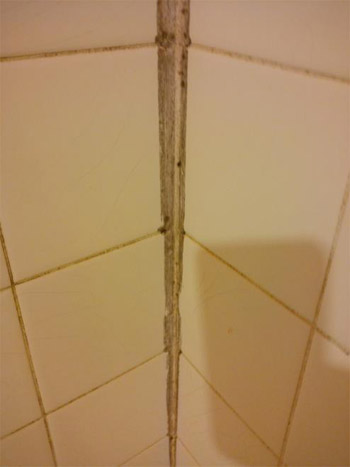
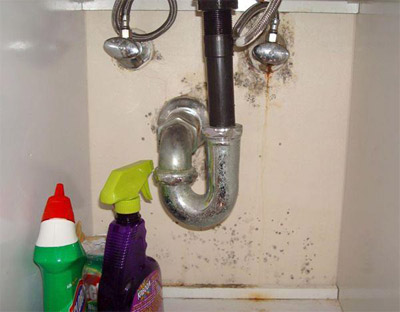
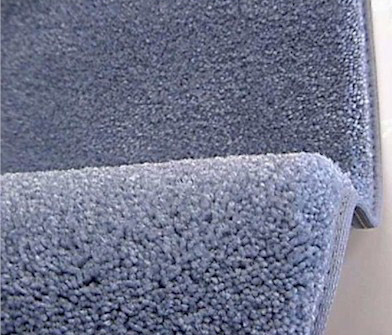
There is a lot of misinformation out there regarding mold and carpets.
Unless you have a wool or a very old carpet that was made using organic materials (like jute or wool), mold does not easily decompose most new carpets.
Newer carpets, such as Saxony, Berbers, Cut pile and Loop are made of nylon. Nylon itself is made of polypropylene (a plastic polymer used in many things including our new bank notes). Plastics are not decomposed by mold since they are not organic, which make them ideal carpets from a mold inspectors perspective.
However, the problem arises when the carpet is stained (i.e. from water spilling). Since carpets are installed closely to baseboards and walls (both of which retain moisture for long periods of time), any water damage on the carpet can easily soak into the adjacent baseboards and drywall, leading to mold growth.
To check if this problem applies to your home, inspect the corners (or if you are checking your own house, lift the carpet corners and inspect the underside and the wood used to secure the carpet to the ground – aka the tackle strip. Often times, you’ll find that the wood strips are moldy and the nails are rusty.).
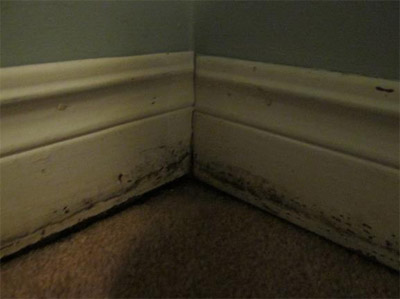
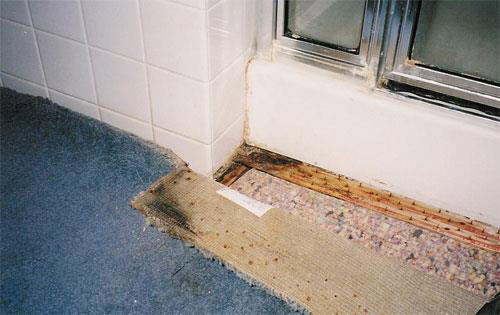
Drywall is a man-made product that contains many organic materials and is very rich in carbon – this makes it fast for decomposition by a variety of mold species, including some of the most toxic such as Stachybotrys and Chaetomium.
In addition, drywall can retain a lot of moisture per volume, and in fact, the gypsum found inside can absorb water at a rate of 1 inch per 24hrs.
On the underside, the rich carbon paper makes for an optimum environment for mold to growth given adequate moisture.
All insurance companies and water damage guides will always direct you to cut down your drywall because of these conditions that make it ideal for nurturing mold growth. In fact, 80% of mold we find every day is hidden under the drywall.
With that all said, inspect the drywalls very carefully by paying attention to any discolorations, peeling and bubbling. This is especially important on the exterior walls.
As you can see from the images, a small amount of surface mold could lead to large findings on the inside.
The most commonly found organic materials found in attic spaces are the wood sheets and joists. Mold will grow from excessive moisture either from a leaky roof or improper ventilation (such as fans exhausting air into attic).
It is always smart to inspect the condition of the attic, and most home inspectors do it now.
Most attic entrances can be found above closets – typically master bedrooms. Below are examples of what to look for.
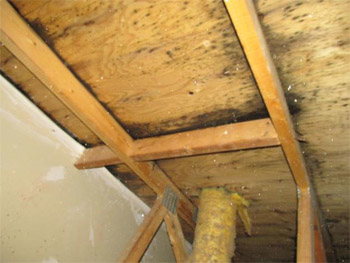
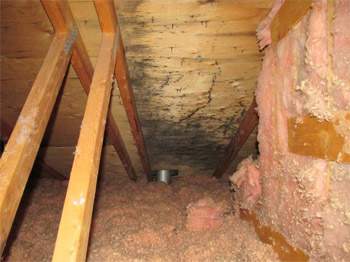
Older kitchens suffer from plumbing leaks from time to time and typically we find mold growth under cabinetry, on drywall or wood components. Occasionally we find them under vinyl flooring or under dishwashers.


Mold does not decompose concrete, so when it’s found on concrete, it’s usually feeding on dust or on efflorescence salts caused by water damage or penetration.
More commonly in the basement, we’ll find mold growth on the ceilings, joist and stairs.
Head down to the basement and inspect these areas using a flashlight. We’ll often find small spots, rather than large patches here.
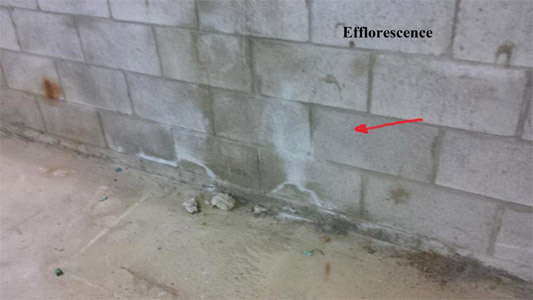
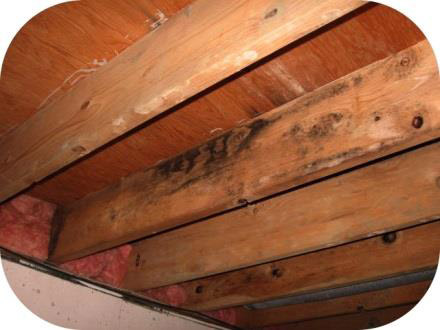
Finished basements are slightly different in that we’ll find drywall, baseboards and flooring, which are all prone to mold growth. Because basements usually have higher humidity levels, it’s important that these are all thoroughly inspected.
Check for any peeling, imperfections, discolorations and obvious mold growth.
Due to their nature, basements are also prone to foundation cracks. Cracks would not be visible inside of a finished basement but if you followed the steps on the exterior inspection and noticed a suspecting spot, check again on the same area on the inside.


The majority of apartments have fan coil units that provide heating in the winter and cooling in the summer.
Fan coil units do not bring fresh air from the outside like a furnace, instead they function on coils heated and cooled by the pipes coming from the building boiler or cooling system. Therefore it only recirculates the air inside the unit regardless if it is clean or poor.
The majority of fan coil units on buildings over 10 years old have mold on the insulation paper inside the unit.
Please open it to inspect and ask who is responsible for the maintenance (you could be in for a big expense).
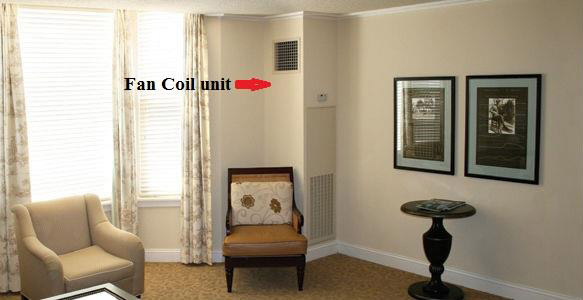
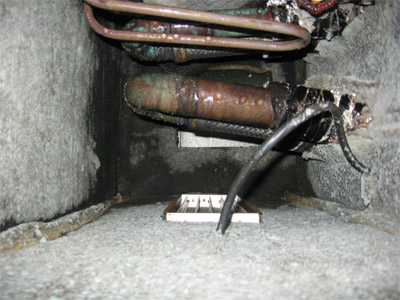
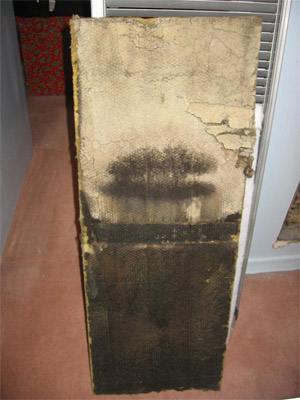
Here is a list of popular locations we serve. Call us if yours is not on the list!
Ajax, Aurora
Bancroft, Barrie, Brampton, Burlington
Downsview
Etobicoke
Georgetown, Guelph
Hamilton
Kitchener
Markham, Midland, Milton, Mississauga
Newmarket, Niagara-on-the-Lake, North York
Oakville
Pickering
Rexdale, Richmond Hill
Scarborough, St Catharines
Toronto
Vaughan
Waterloo, Whitby